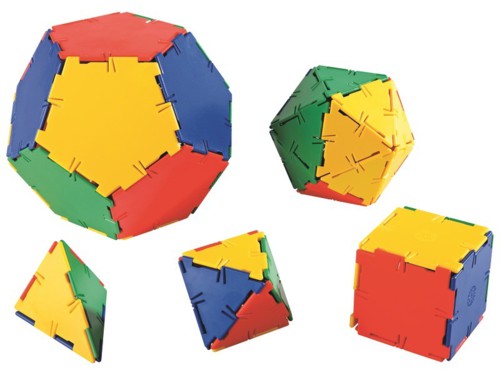There are some really hands on "basic" topology things you could do. The most basic is the Mobius strip: watch this Numberphile video https://www.youtube.com/watch?v=wKV0GYvR2X8&ab_channel=Numberphile for some fun hands-on demonstrations you can do.
In general, one can draw some arrows on a polygon, and try to connect it up into a surface. For the square, we have the following 3: Mobius strips are the easiest to make, and then Klein bottles, and then the real projective plane.

The Klein bottle can be understood via this diagram https://en.wikipedia.org/wiki/Klein_bottle

The real projective plane is the hardest of the three, but one can make one hands-on via a paper foldable: https://divisbyzero.com/2020/04/08/make-a-real-projective-plane-boys-surface-out-of-paper/. I made one today! Smoothing this construction out, one gets a Boy's surface. They look very nice http://wordpress.discretization.de/ddg2019/2019/05/06/tutorial-4-boys-surface/.
For polygons more complicated than a square, Jos Leys https://www.youtube.com/@josleys/videos has a lot of videos connecting up various polygons. Mesmerizing to watch! Here are a couple:
Another medium of hands-on activity: you can crochet hyperbolic surfaces https://www.theiff.org/oexhibits/oe1e.html! See this TedTalk https://www.youtube.com/watch?v=D-AHvZqbMT4&t=0s&ab_channel=TEDxTalks (
Crocheting Hyperbolic Planes: Daina Taimiņa) and this tutorial video https://www.youtube.com/watch?v=xtlDND7NVp8&ab_channel=CodeParade.
If 2 dimensions gets too boring, one can go to the third https://www.youtube.com/watch?v=yqUv2JO2BCs&ab_channel=ZenoRogue. There are now lots of games that have the player play in non-Euclidean (hyperbolic) 3-space.
Hyperbolic geometry in 3-space has no shortage of difficulty: https://www.youtube.com/watch?v=IrlaVaATiOY&ab_channel=LastGinger ([HD Upscale] Not Knot - A guide to mathematical knots in hyperbolic space).
There's also this super classic and super awesome video: https://www.youtube.com/watch?v=OI-To1eUtuU&ab_channel=LastGinger ([HD Upscale] Outside In - How to turn a sphere inside out). Mathologer also has a video on sphere eversion that I find a bit easier to visualize https://www.youtube.com/watch?v=ixduANVe0gg&ab_channel=Mathologer.
Also one can play around with visualizing the 4th dimension https://www.youtube.com/watch?v=0t4aKJuKP0Q&ab_channel=%5Bmtbdesignworks%7BMiegakure%2C4DToys%7D%5D.
EDIT: there's also Henry Segerman's Youtube channel https://www.youtube.com/@henryseg. There are several videos
Another video I found very fun was this one https://www.youtube.com/watch?v=Cyhqc8l03GE (Using topology to close a rubber band bracelet), which spawned from a discussion on Math Overflow (a Q&A site for professional mathematicians; this video's construction of a rubber band bracelet is cutting edge research!)
EDIT 2/17/24: I came across a beautiful beautiful set of videos https://www.youtube.com/watch?v=6-Z0qgYjVjU&list=PLJHszsWbB6hq40r_aSVlCXDvTT0VcrgcT (also found here https://archive.org/details/M435Ep8Of8FlowsTopology), where people show lots and lots of models of surfaces, and prove some wonderful things. I feel like working with children to make these models, and playing around with deforming them (making many models to illustrate a deformation), would be really cool, and also introduce them to really deep ideas!
One idea that appears over and over again is the Euler characteristic, which is also a great theorem to study in a "hands on" manner with children, making different polyhedron and so forth.





